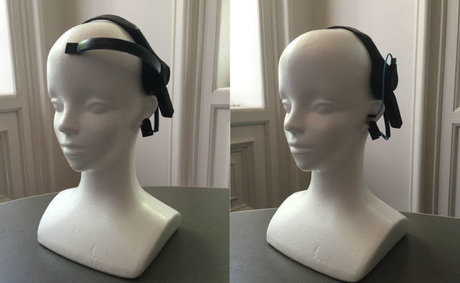
Electroencephalography
Anyone who’s had to get an EEG at the hospital knows that these devices use electrodes affixed to your scalp to record electrical activity of the brain. It’s a non-invasive way of monitoring brainwaves across different mental states—from relaxation to anxiety—and tracking neural oscillations among those suffering from sleep disorders, epilepsy, or even coma patients.
Traditional EEGs, the ones used in hospitals, are very conspicuous; while companies are starting to create smaller less clunky versions of the scalp-based electrode system, we have yet to be introduced to one that can truly be a wearable alternative.
A team of engineers led by John Chuang from UC Berkeley is taking on the challenge. Their goal? Create a device that is as unobtrusive as it is effective.
In-ear EEG
Their idea? Design an in-ear EEG sensor that can send mental commands to other electronic devices, such as a drone, a computer. To achieve this, the team began by taking the “cheapest available consumer-grade EEG headset,” –a clunky headset with a sensor attached on the forehead—and moving the sensor to the ear canal instead, thus designing a sleeker, more discreet version.

Unfortunately, EEGs don’t offer a very clear signal, and are unable to translate verbalized thoughts. This led the team to calibrate their systems using mental gestures that can serve as the EEG signature needed to translate the brain-to-machine signal. Ultimately, the goal is to give humans a more natural way to ‘talk’ to computers.
Similarly, Imperial College London researchers led by Danilo Mandic is looking into the creation of a truly wearable EEG system, which can be used to closely monitor chronic diseases, sleep patterns and even track military personnel’s mental state and fitness. We’re not there yet, but the progress being made is extremely promising.